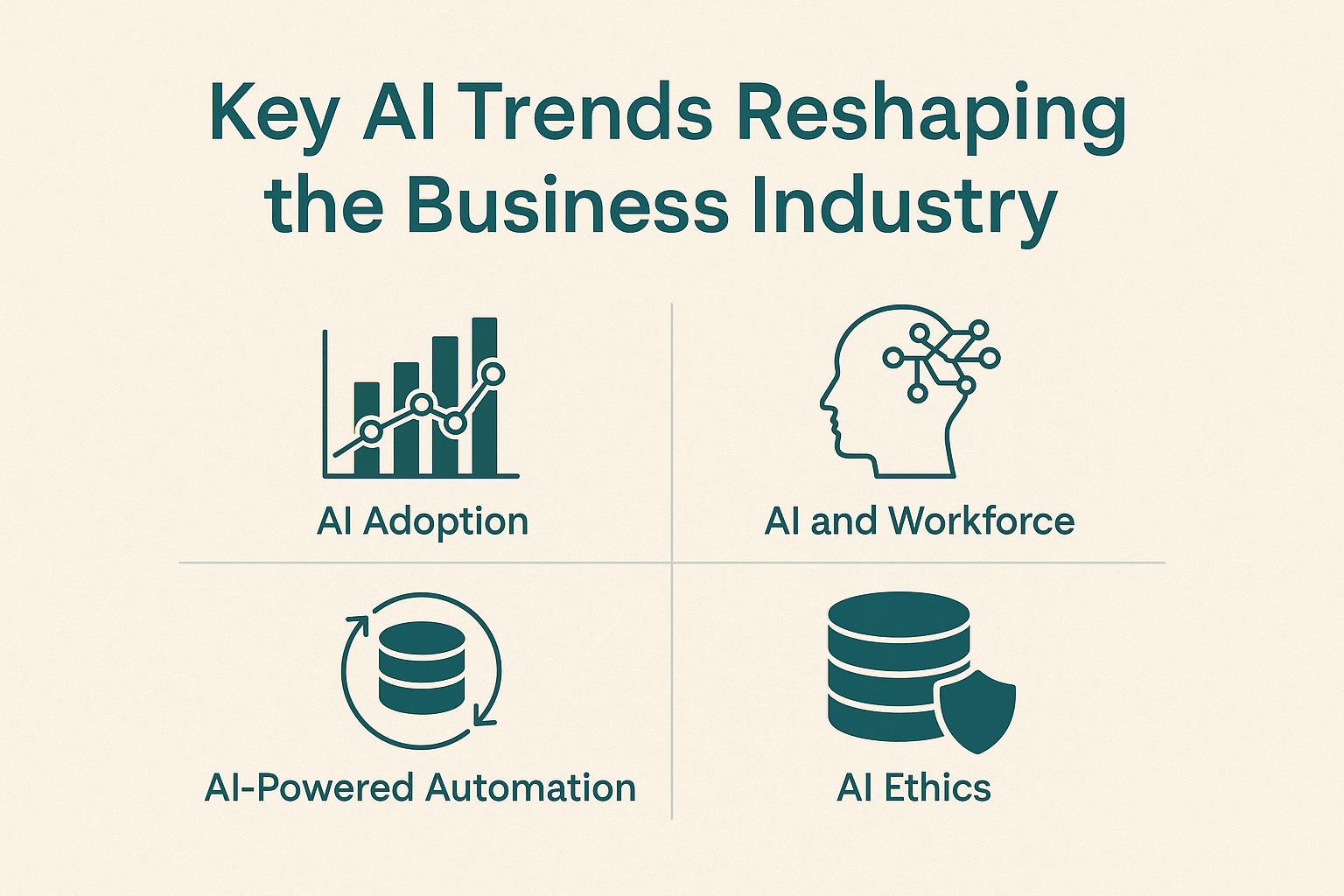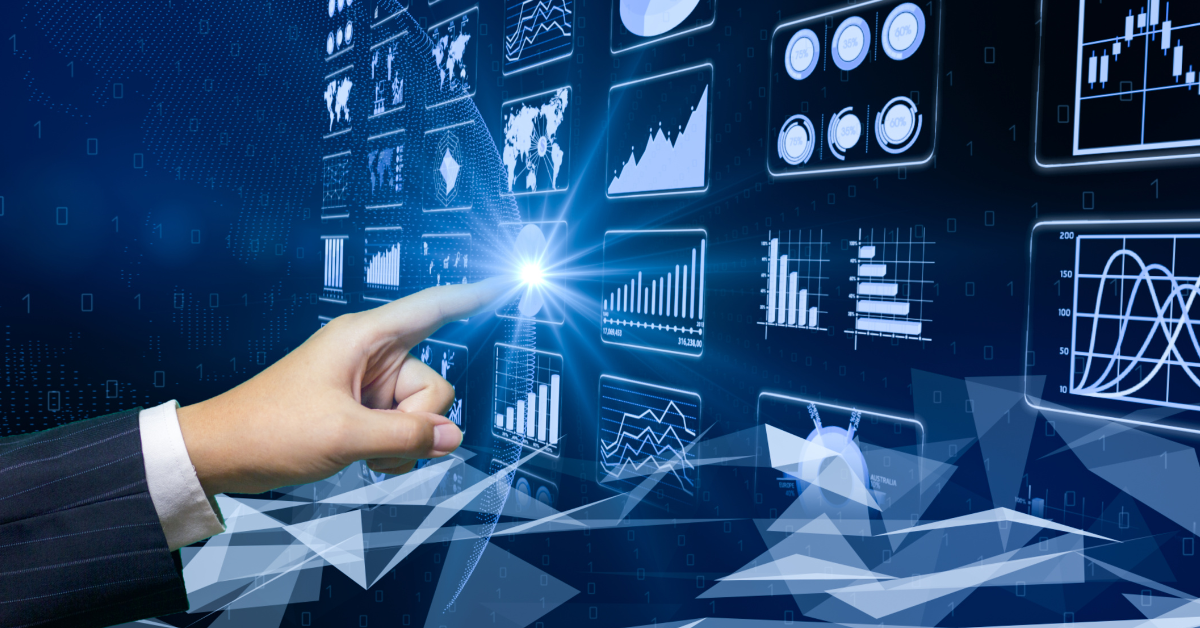Artificial intelligence is revolutionizing the business landscape, introducing transformative trends that are reshaping industries at an unprecedented pace. As AI technologies continue to evolve, businesses are leveraging machine learning and data analysis to optimize operations and enhance decision-making capabilities.
In this AI report, we’ll delve into the key AI trends that are driving innovation, from automated customer service solutions to predictive analytics in supply chain management.
Researchers and AI professionals can gain valuable insights into how these developments are influencing corporate strategies and creating new opportunities for growth. Stay ahead of the curve by exploring how these cutting-edge technologies are redefining the future of business.
Emerging AI Technologies
The field of artificial intelligence is rapidly evolving, with new technologies emerging that are set to transform various aspects of business operations. This section explores the latest advancements in machine learning, data analysis, and automation trends that are shaping the AI landscape.
Machine Learning Advancements
Machine learning, a core component of artificial intelligence, has seen significant advancements in recent years. These developments are enabling more sophisticated AI applications across industries.
Deep learning algorithms, a subset of machine learning, have become increasingly powerful. They can now process vast amounts of unstructured data, leading to breakthroughs in image and speech recognition.
Natural Language Processing (NLP) has also made substantial progress. AI systems can now understand and generate human-like text, opening up new possibilities for chatbots and virtual assistants.
Transfer learning techniques are allowing AI models to apply knowledge gained from one task to new, related tasks. This is reducing the amount of data and computing power needed to train effective AI systems.

Breakthroughs in Data Analysis
Data analysis is at the heart of AI’s capabilities, and recent breakthroughs are enhancing its power and applicability in business contexts.
Big Data Analytics has evolved to handle increasingly large and complex datasets. AI-powered tools can now process structured and unstructured data from multiple sources, providing deeper insights.
Predictive analytics has become more accurate and reliable. By analyzing historical data and current trends, AI can forecast future outcomes with greater precision, aiding in strategic decision-making.
Real-time analytics is now possible thanks to advances in processing power and AI algorithms. This allows businesses to make instant decisions based on up-to-the-minute data.
Edge computing is bringing data analysis closer to the source, reducing latency and enabling faster responses in applications like IoT devices and autonomous vehicles.
AI Trends in Automation
Automation powered by AI is transforming business processes across industries, increasing efficiency and reducing human error.
Robotic Process Automation (RPA) is being enhanced with AI capabilities, allowing for the automation of more complex, cognitive tasks that previously required human intervention.
AI-driven autonomous systems are becoming more sophisticated. From self-driving vehicles to automated manufacturing processes, these systems are revolutionizing industries.
Intelligent automation is combining AI with other technologies like IoT and blockchain to create more comprehensive, end-to-end automated solutions.
As automation technologies advance, businesses are focusing on human-AI collaboration, finding the optimal balance between automated processes and human expertise.
Impact on Business Models
The integration of AI technologies is fundamentally changing how businesses operate, make decisions, and interact with customers. This section examines the transformative effects of AI on traditional industries, decision-making processes, and customer experiences.
Transforming Traditional Industries
Artificial intelligence is reshaping traditional industries, driving innovation and creating new opportunities for growth and efficiency.
In manufacturing, AI-powered predictive maintenance is reducing downtime and optimizing production schedules. Machine learning algorithms analyze sensor data to predict equipment failures before they occur.
The financial sector is leveraging AI for fraud detection and risk assessment. AI systems can analyze vast amounts of transaction data in real-time, identifying suspicious patterns and potential risks more accurately than traditional methods.
Healthcare is benefiting from AI in areas such as diagnostic imaging and drug discovery. AI algorithms can analyze medical images with high accuracy, assisting doctors in early disease detection.
Agriculture is seeing the rise of precision farming, where AI-driven systems optimize crop yields by analyzing soil conditions, weather patterns, and crop health data.
AI-Driven Decision Making
AI is revolutionizing decision-making processes in businesses, providing data-driven insights and predictive capabilities.
Data-driven decision making is becoming the norm as AI systems can process and analyze vast amounts of data from multiple sources, providing a more comprehensive view of business operations and market trends.
Predictive analytics powered by AI is enabling businesses to forecast future outcomes with greater accuracy. This is particularly valuable in areas such as demand forecasting, risk assessment, and resource allocation.
AI is also enhancing strategic planning by simulating various scenarios and their potential outcomes. This allows businesses to test different strategies in a virtual environment before implementation.
As AI systems become more sophisticated, they are increasingly being used in real-time decision making, particularly in fast-paced environments like stock trading or supply chain management.
Enhancing Customer Experience
AI is transforming how businesses interact with and understand their customers, leading to more personalized and efficient experiences.
Chatbots and virtual assistants powered by Natural Language Processing are providing 24/7 customer support, handling routine inquiries and freeing up human agents for more complex issues.
Personalization algorithms are analyzing customer data to provide tailored product recommendations and customized marketing messages, increasing engagement and conversion rates.
AI-driven sentiment analysis is helping businesses understand customer opinions and emotions by analyzing social media posts, reviews, and other online content.
Predictive customer service is becoming possible, with AI systems anticipating customer needs and proactively addressing potential issues before they arise.
Future Prospects and Challenges
As AI continues to advance, it brings both exciting possibilities and significant challenges. This section explores the ethical considerations surrounding AI, the preparation needed for AI-driven economies, and the role of technology reports in forecasting future trends.
Ethical Considerations in AI
The rapid advancement of AI technologies has brought ethical concerns to the forefront of discussions in both business and public policy spheres.
Bias in AI systems is a significant concern. AI algorithms can inadvertently perpetuate or amplify existing biases present in their training data, leading to unfair or discriminatory outcomes.
Privacy and data protection are critical issues as AI systems often require vast amounts of data to function effectively. Businesses must balance the benefits of AI with the need to protect individual privacy rights.
The impact of AI on employment is a complex issue. While AI is creating new job opportunities, it’s also automating many existing roles, necessitating workforce reskilling and adaptation.
Transparency and explainability in AI decision-making processes are becoming increasingly important, especially in high-stakes areas like healthcare and finance.
Preparing for AI-Driven Economies
As AI becomes more pervasive, economies worldwide are adapting to this new technological landscape.
Education systems are evolving to equip future generations with the skills needed in an AI-driven world. This includes not just technical skills but also critical thinking and creativity.
Governments are developing AI strategies and policies to foster innovation while addressing potential risks and challenges.
Businesses are investing in AI capabilities and rethinking their organizational structures to fully leverage the potential of AI technologies.
As AI automates more tasks, there’s a growing focus on developing uniquely human skills that complement AI capabilities.
The Role of Technology Reports in Forecasting
Technology reports play a crucial role in helping businesses and policymakers anticipate and prepare for future AI trends.
These reports analyze current technological developments and market trends to predict future directions in AI and related fields.
By providing insights into emerging technologies and their potential impacts, technology reports help businesses make informed decisions about AI investments and strategies.
Regular AI reports also help track the progress of AI technologies over time, allowing for adjustments in long-term planning and strategy.
As the AI landscape evolves rapidly, up-to-date technology reports are becoming essential tools for staying competitive in an AI-driven business environment.




